Creating an Environment Where Change Thrives Beyond Communication and Training
“When a flower doesn’t bloom, you fix the environment, not the flower.”
Alexander Den Heijer
In any organization, successful change isn’t just about communication and training. It’s about adjusting the environment to support and sustain new behaviors. This article will delve into the multiple levers you can pull to create an environment where change can thrive.
Organizational Levers
1. The Physical Environment:
Sometimes, a small adjustment in the physical environment can drive significant behavior change. For instance, if you want two departments to work more closely together, move them to the same space. Physical proximity won’t accomplish the change alone, but it can help facilitate the impetus to interact – and it’s a short journey from there.
2. Organizational Measures:
If you have organizational measures that are counter to the goals of the change, it will be very close to impossible to effectively and successfully make the change. Misalignment between how performance is being measured and organizational objectives is one of the most common reasons for change failure.
When working with an organization to update its structure, I convinced top leadership to include a performance measure in every executive’s performance plan. This measure required leaders to support the initiative and provide timely feedback. Aligning performance measures with the change goals ensured that even resistant executives had to comply, thus ensuring the success of the change effort.
3. Policies and Procedures:
Policies and procedures evolve over time to accommodate organizational realities. If they are not adjusted during change initiatives, they can impede your efforts. For instance, policies based on outdated criteria such as degrees and certifications can create constraints when changing a talent management approach. Adjusting these policies to focus on competencies rather than degrees can open up new opportunities and support the change.
4. IT Systems and SOPs:
Outdated systems and standard operating procedures (SOPs) can significantly hinder change. If a new IT system is implemented, all related SOPs must be updated to reflect the new system. Without these updates, employees will hit a wall, leading to slowdowns and stoppages. Ensuring that SOPs align with the new system is crucial for smooth transitions.
5. Awards and Recognition:
People are the heart and soul of a company. The behaviors and successes an organization recognizes and rewards are subtle yet important drivers of behavior. Ensuring that what is rewarded aligns with the change goals is vital for sustainable and successful change.
Metrics as a Lever
Metrics are powerful drivers of behavior. Whether organizational metrics or metrics used to measure individual performance, they significantly influence day-to-day activities. If these metrics are out of alignment with the desired behaviors of the change, long-term success is unlikely.
For example, if a company aims to create a culture focused on customer service but the metrics emphasize financial targets, employees will prioritize meeting those targets over providing excellent customer service. This misalignment can severely impede the change effort.
Questions to Consider
When planning and implementing change, consider the following questions:
- What parts of the system can be changed or adjusted to drive desired behaviors?
- What parts of the system are counter to the goals of the current change?
- How can you align those aspects to the change?
Levers within an organization can either support, oppose, or be neutral toward change. By analyzing and adjusting these levers, you can create an environment where desired behaviors are encouraged and supported. Change isn’t just about communication and training—it’s about creating a supportive environment that makes the new behaviors the path of least resistance.
As you work through your change initiative, remember that the goal is to align the environment with the desired outcomes.
Ready to drive meaningful change in your organization? You can start by identifying the levers you can pull to create an environment where new behaviors can flourish. Check out our workbook to help you identify the levers of change that will work for you, or contact us to learn how to transform your organizational environment for lasting success.





